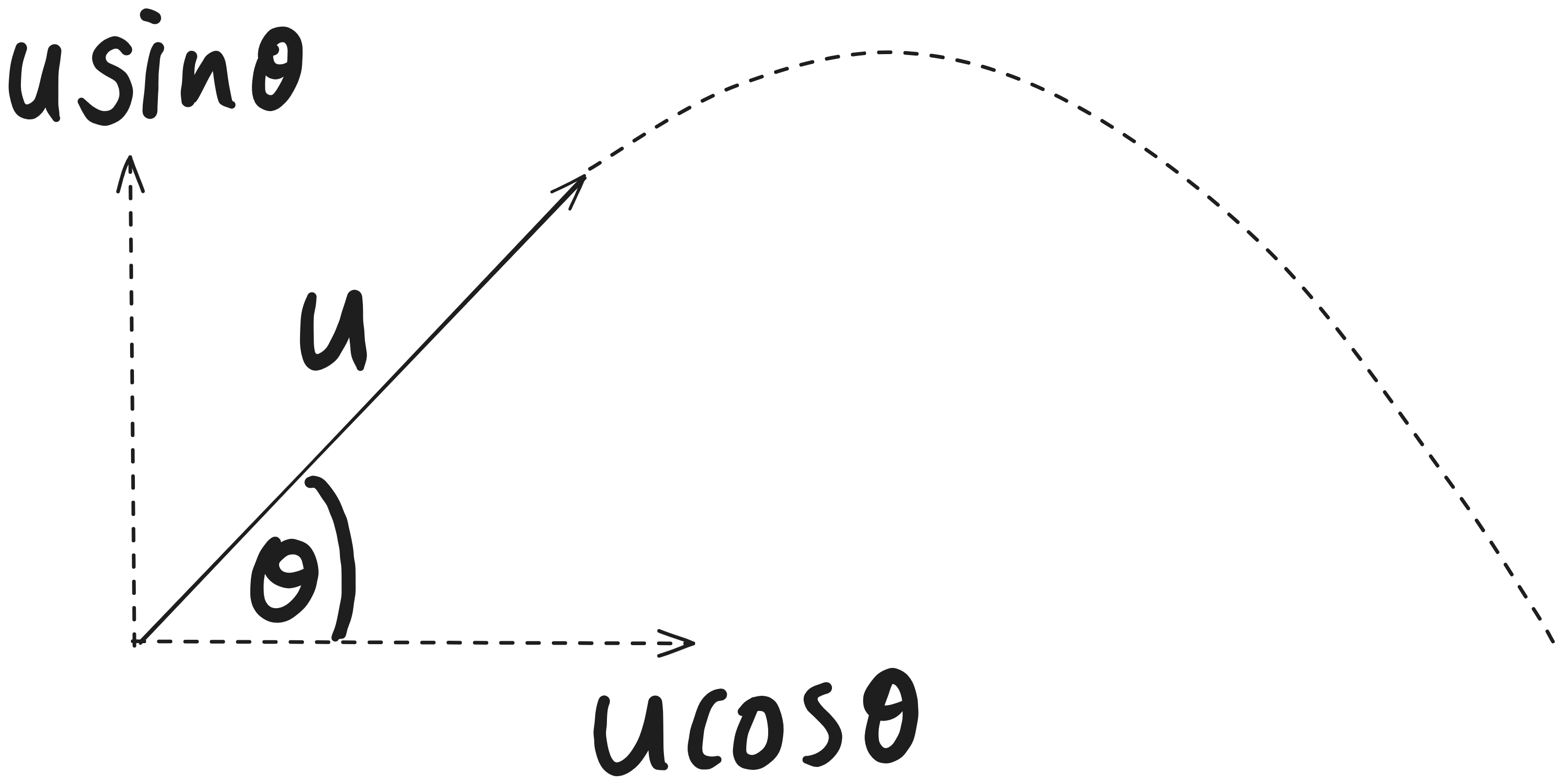Recall that the following do not change for projectile motion, given that the angle of projection(θ) is relative to the horizontal:
- ux=ucosθ
- uy=usinθ
- ax=0
- ay=−g
Projectile motion can be represented by a parabola of the form:
y=ax2+bx+c
We can use the formula for displacement(s) written in terms of initial velocity(u), acceleration(a) and time(t):
s=ut+21at2
Applying it to the x direction:
sx=uxt+21axt2
We know that ux=ucosθ and ax=0:
sx=utcosθ
Note that we do not write ucosθt because it implies that the time(t) is part of the angle being governed by cosine. It is more appropriate to write (ucosθ)t and then rewrite this as utcosθ
Applying it to the y direction:
sy=uyt+21ayt2
We know that uy=usinθ and ay=−g:
sy=utsinθ−21gt2
We can let sx be x and sy be y to make visualizing them as parametric equations easier:
x=utcosθ
y=utsinθ−21gt2
Because u and θ are constants for a given projectile, we essentially have x and y written in terms of t. This makes them parametric equations with the parameter being time, t.
Transposing for t in equation 1:
t=ucosθx
Substituting this into the second equation:
yyyy=u(ucosθx)sinθ−21g(ucosθx)2=xtanθ−21g(u2cos2θx2)=xtanθ−2u2gsec2θx2=ax2+bx+c
What are the coefficients of x2 and x written in terms of u, θ and g? What is the value of the constant c?

